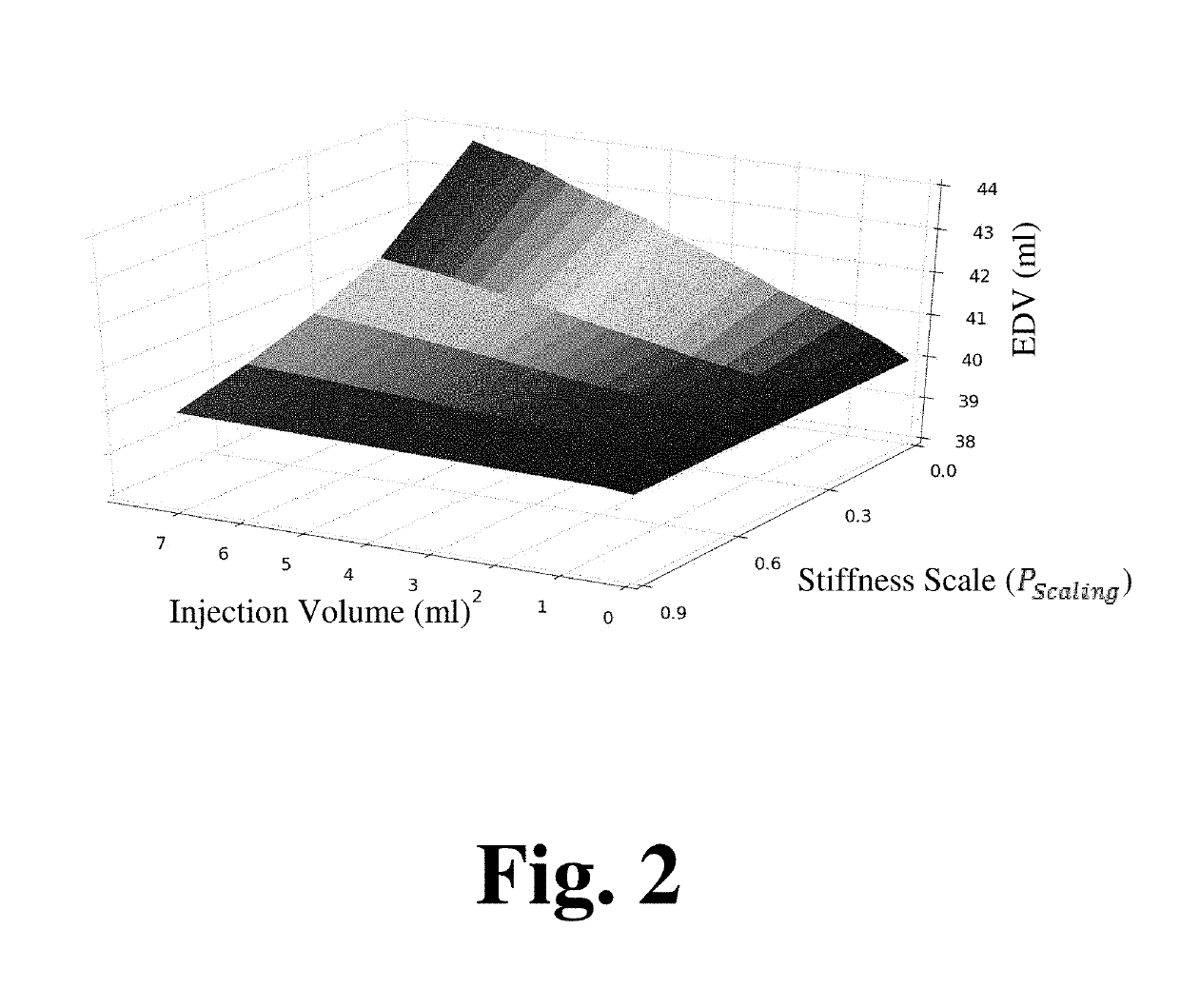Methods to treat heart failure
- Summary
- Abstract
- Description
- Claims
- Application Information
AI Technical Summary
Benefits of technology
Problems solved by technology
Method used
Image
Examples
Embodiment Construction
[0041]For the purposes of promoting an understanding of the principles of the present disclosure, reference will now be made to the embodiments illustrated in the drawings, and specific language will be used to describe the same. It will nevertheless be understood that no limitation of the scope of this disclosure is thereby intended.
[0042]As referenced herein, the present disclosure provides for the use of minimally invasive injections of collagenase at strategic locations in the left ventricle (LV) having, an abnormally stiff ECM as being an effective treatment for HFpEF. As noted in a 1991 manuscript (Guccione et al, 1991), the mechanical properties of the ECM in the normal dog LV are non-linear and anisotropic (i.e., transversely isotropic with respect to the local muscle fiber or myofiber direction). In other words, the stiffness of the ECM increases as it is stretched, and the ECM is approximately three times stiffer in the myofiber direction than in a plane perpendicular or t...
PUM
| Property | Measurement | Unit |
|---|---|---|
| Volume | aaaaa | aaaaa |
| Volume | aaaaa | aaaaa |
| Volume | aaaaa | aaaaa |
Abstract
Description
Claims
Application Information
 Login to View More
Login to View More - R&D
- Intellectual Property
- Life Sciences
- Materials
- Tech Scout
- Unparalleled Data Quality
- Higher Quality Content
- 60% Fewer Hallucinations
Browse by: Latest US Patents, China's latest patents, Technical Efficacy Thesaurus, Application Domain, Technology Topic, Popular Technical Reports.
© 2025 PatSnap. All rights reserved.Legal|Privacy policy|Modern Slavery Act Transparency Statement|Sitemap|About US| Contact US: help@patsnap.com



